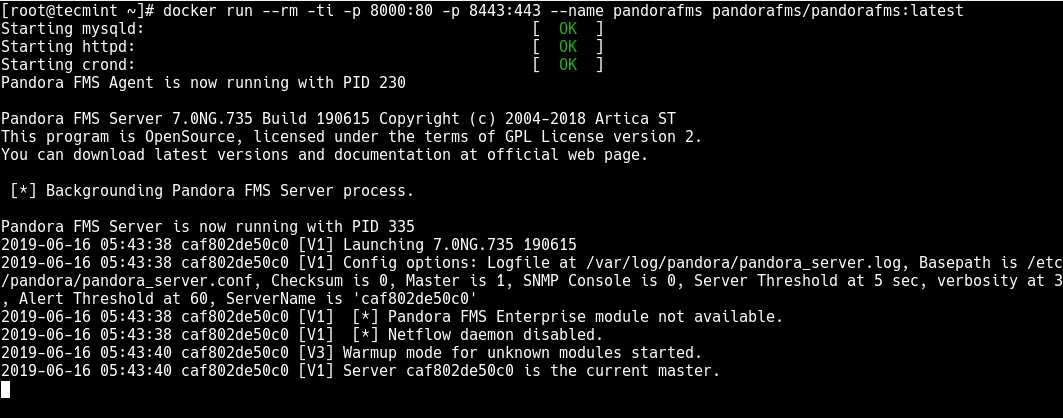

- #Docker run image in terminal install#
- #Docker run image in terminal serial#
- #Docker run image in terminal update#
You can get private repos from Docker, or from many other third-party providers. In this case, you need to create your own private Docker Registry. There are situations where you will not want your image to be publicly available. Use Docker Hub Registryīy default, Docker provides an official free-to-use registry, DockerHub, where you can push and pull your images.įor example at Stereolabs, the ZED SDK Docker images are built automatically by a public Gitlab CI job and pushed to Stereolabs DockerHub repository. A registry is a stateless, server-side application that stores and lets you distribute Docker images. Now that you have created your image, you need to share it on a registry so it can be downloaded and run on any destination machine. Use multi-stage builds (see Docker docs) and push only your prod image. Production images should not include all of the libraries and dependencies pulled in by the build.
#Docker run image in terminal update#
Similarly, clean package lists that are downloaded with apt-get update by removing /var/lib/apt/lists/* in the same RUN step.Ĭreate separate images for development and production. Each layer is added on top of the others, so files that were not removed in a given RUN step will be present in the final image even they are removed in a later RUN step.

Remove tarballs or other archive files that were copied during the installation.
#Docker run image in terminal install#
Use -no-install-recommends when installing packages with apt-get install to disable installation of optional packages and save disk space. Note that layers are designed to be reusable, and will not be pushed or pulled if they didn’t change. Each command adds a layer to the image, so consolidating the number of RUN can reduce the number of layers in the final image. Here are a few advice to keep your image size small:
#Docker run image in terminal serial#
Hello! This is my serial number: 23468248 Optimize your Image Sizeĭocker images can get very large and become a problem when pulling over the network or pushing on devices with limited storage (such as Jetson Nano). No calibration file found for SN23468248. $ docker run -it -gpus all -privileged hellozed:v1

Now that you have created a Dockerfile, it’s time to build your image using the docker build command. These will be available at runtime using NVIDIA container toolkit.įor more information on writing dockerfiles, check Dockerfile reference documentation. We also tell the compiler to allow linking even if there are undefined symbols from libraries such as nvcuvid that are not yet available. We provide some extra arguments to CMake to ensure that CMake and GCC can find all the required CUDA libraries. DCMAKE_CXX_FLAGS = "-Wl,-allow-shlib-undefined". # Specify the parent image from which we build FROM stereolabs/zed:3.0-devel-cuda10.0-ubuntu18.04 # Set the working directory WORKDIR /app # Copy files from your host to your current working directory COPY cpp hello_zed_src # Build the application with cmake RUN mkdir /app/hello_zed_src/build & cd /app/hello_zed_src/build & \Ĭmake -DCMAKE_LIBRARY_PATH =/usr/local/cuda/lib64/stubs \


 0 kommentar(er)
0 kommentar(er)
